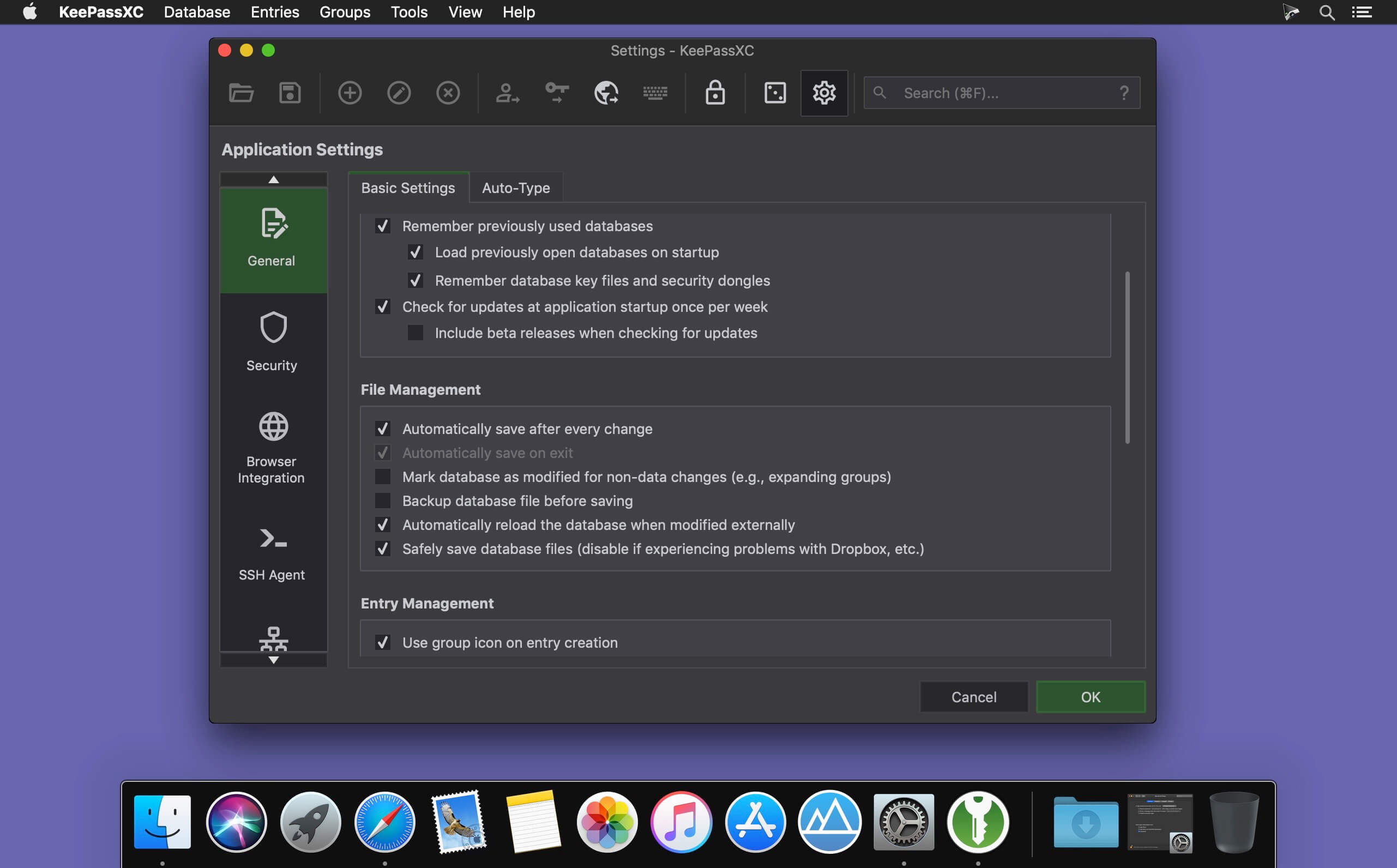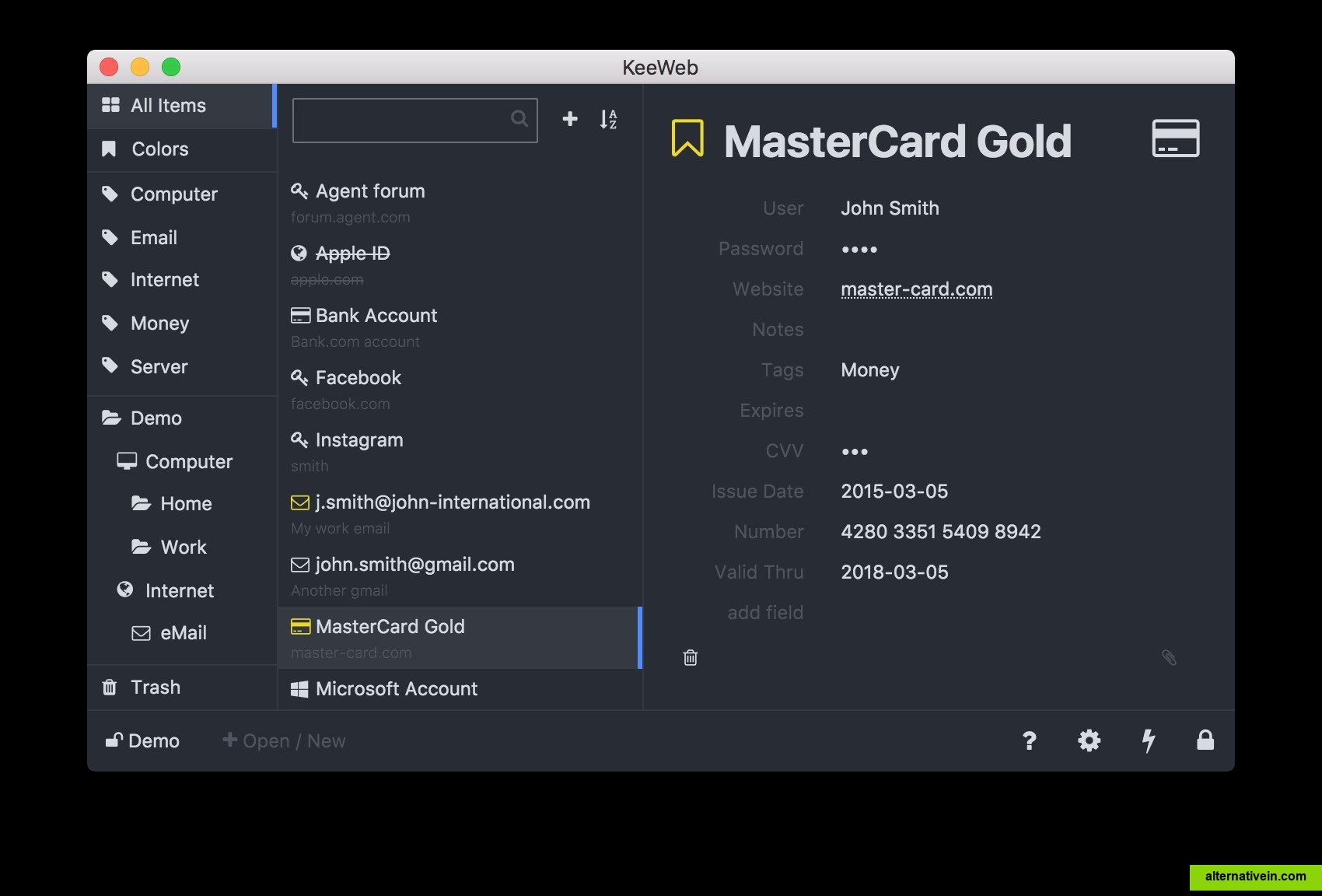
#Keeweb totp full#
If you want to try using KeePass v2, you can go to Open URL and specify as the file, and you should have full read/write access. Make sure you can both upload and delete files from that space. Try uploading your KeePass database to the WebDAV folder. If you're on Linux, try entering webdavs:///webdav into Dolphin, Nautilus, or whatever file manager you have. If you're on macOS, press Command+K and enter as the server. htpasswd, which is pretty common.ĭone! You can test your WebDAV setup in a number of ways. Once that's ready, it's time to set up HTTP authentication, since we don't want just anyone accessing our password database, do we? I'm storing my info in a file called.
#Keeweb totp for free#
Doing so is beyond the scope of this article, but you can start by searching for apache virtualhost setup, and then look up Let's Encrypt and certbot for free TLS certificates. You will first need to set up a new VirtualHost as well as HTTPS. We can fix those two sFTP-related problems by using WebDAV, so let's get going! I'm using Apache on CentOS for my web server, so if you want to use nginx, lighttpd, or whatever, you'll need to make adjustments accordingly. KeePassXC doesn't have plugins (yet?), so the syncing options are trickier.


The simplest way is to store the KeePass database on a networked computer (such as an sFTP server). Basically, can we spin our own version of LastPass / Bitwarden, but using KeePass-related tools? I want a setup where both my wife and I can access our shared KeePass database simultaneously on multiple computers, plus on a couple of Android phones, with bonus points for having a self-hosted, password-protected web interface in case we have neither our own computers nor our phones with us. Bitwarden is better since it's open source (and you can host the stack yourself), but since I'm already familiar with KeePass, I'm not ready to give up on that ecosystem yet. Sure, there are solutions like LastPass, but I have an inherent mistrust of a closed-source, cloud-based password manager. But what about a scenario wherein two (or more) people want to access/change the database simultaneously? If you're just using something like Dropbox to sync the database, then you will likely end up with file conflicts and lost data. Indeed, I recommend it to anyone in a single-user situation. Toss in something like Keepass2Android, and you have mobile access as well, all for free. Just stick the database on Dropbox, Google Drive, or use Syncthing, and voila, you can access your password database everywhere. It works brilliantly, especially for a single user. All added files will be secured by custom passwords generated by KeeWeb.For years I used KeePass to manage my ever-growing number of passwords. Click the "Click to open a file" box to add files to secure. For Windows users, download the app for KeeWeb.
#Keeweb totp install#
Install the KeeWeb app from release pages for Ubuntu users or AUR for AURLinux users.

However, you have to be online to use it. The interface is the same as that of the desktop. In case you don't want to install the desktop app, you can use the KeeWeb app.
#Keeweb totp how to#
Here is a simple guide on how to install and use KeeWeb on desktop. Setting up and running KeeWeb on a device is not hard. Lacks password breach alert for some plugins.Custom password length and character generator.


 0 kommentar(er)
0 kommentar(er)
